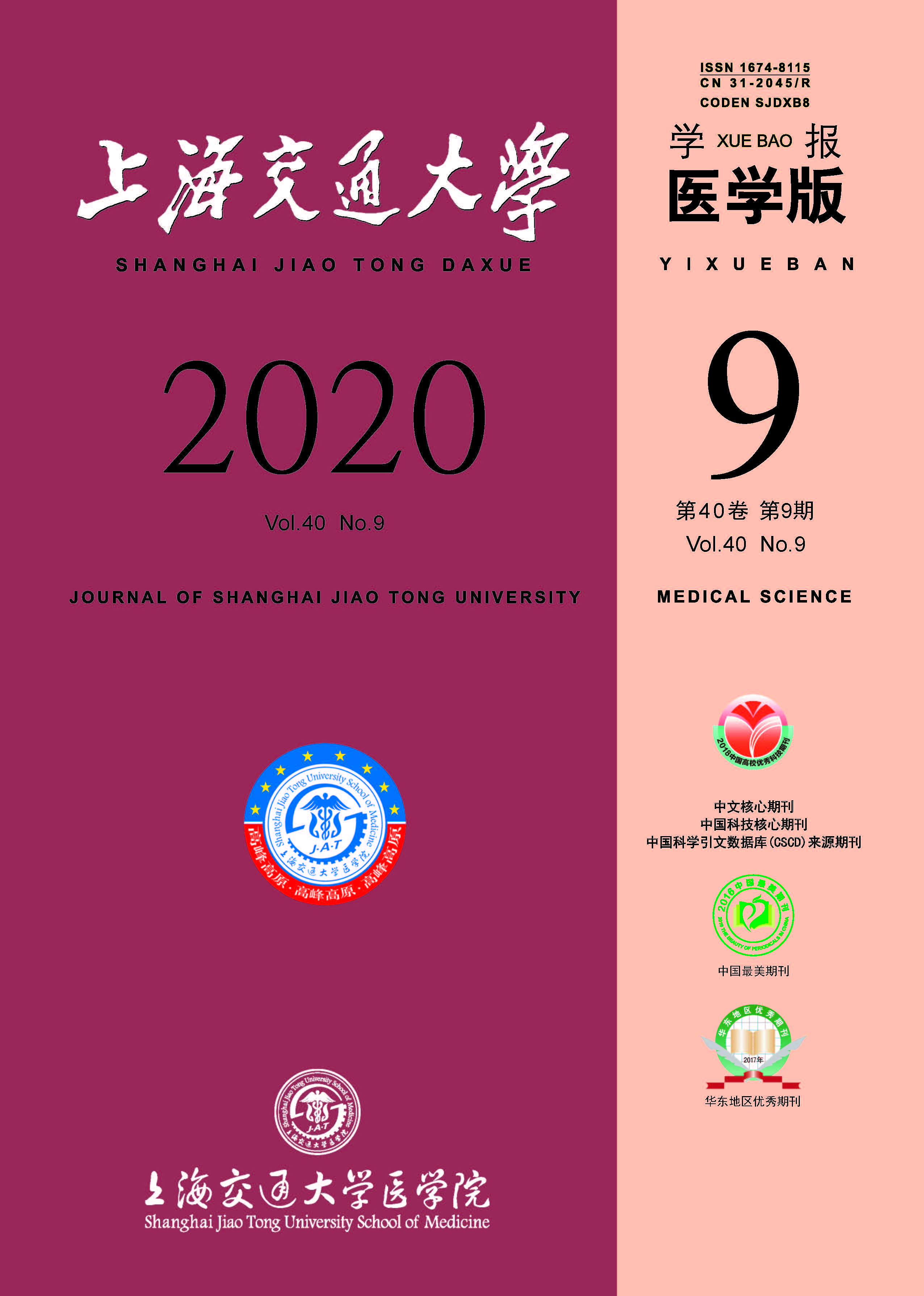|
|
Clinical value of fibroblast growth factor 19 in predicting gastrointestinal dysfunction in children with sepsis
TANG Xiao-meng1, 2, REN Yu-qian1, XIONG Xi1, 2, MIAO Hui-jie1, SHAO Lu-jing1, 2, CUI Yun1, ZHANG Yu-cai 1, 2, WANG Chun-xia1, 2
2020, 40 (09):
1236-1242.
doi: 10.3969/j.issn.1674-8115.2020.09.012
Objective · To assess the potential value of fibroblast growth factor 19 (FGF19) as predictors of gastrointestinal dysfunction in children with sepsis. Methods · A prospective study was conducted, and 101 pediatric patients diagnosed with sepsis and admitted to the pediatric intensive care unit (PICU) at Shanghai Children's Hospital, Shanghai Jiao Tong University were enrolled from January 2018 to December 2018. Eleven cases with missing serum FGF19 were excluded, and 90 cases were analyzed in this study. According to whether gastrointestinal dysfunction occurred in patients with sepsis during PICU hospitalization, patients were divided into two groups, including sepsis-associated gastrointestinal dysfunction group (n=32) and sepsis without gastrointestinal dysfunction group (n=58). Serum FGF19 level was determined on PICU admission. The difference of serum FGF19 levels between the two groups were compared by using Mann-Whitney U test, and multivariate Logistic regression analysis was used to assess the association of FGF19 level with sepsis-associated gastrointestinal dysfunction. Results · The total PICU mortality rate was 12.2% (11/90). There was a tendency for increased PICU mortality in patients with sepsis-associated gastrointestinal dysfunction compared with patients without gastrointestinal dysfunction, but without statistical significance (18.8% vs 8.6%, P=0.160). Serum FGF19 levels were significantly decreased in patients with sepsis-associated gastrointestinal dysfunction compared with patients without gastrointestinal dysfunction [48.4 (27.7, 95.6) μg/mL vs 77.6 (45.8, 151.2) μg/mL, P=0.046]. The results of receiver operating characteristic (ROC) curve analysis showed that the area under ROC curve (AUC) for FGF19 predicting gastrointestinal dysfunction in pediatric patients with sepsis was 0.636 (95%CI 0.515–0.757), which was similar to the predictive capacity of procalcitonin [AUC=0.683 (95%CI 0.562–0.804), P=0.597]. In addition, serum FGF19 levels lower than 60 μg/mL on PICU admission indicated an increased risk of gastrointestinal dysfunction in pediatric patients with sepsis. Conclusion · Serum FGF19 is a novel predictor of gastrointestinal dysfunction in pediatric patients with sepsis.
Related Articles |
Metrics
|

